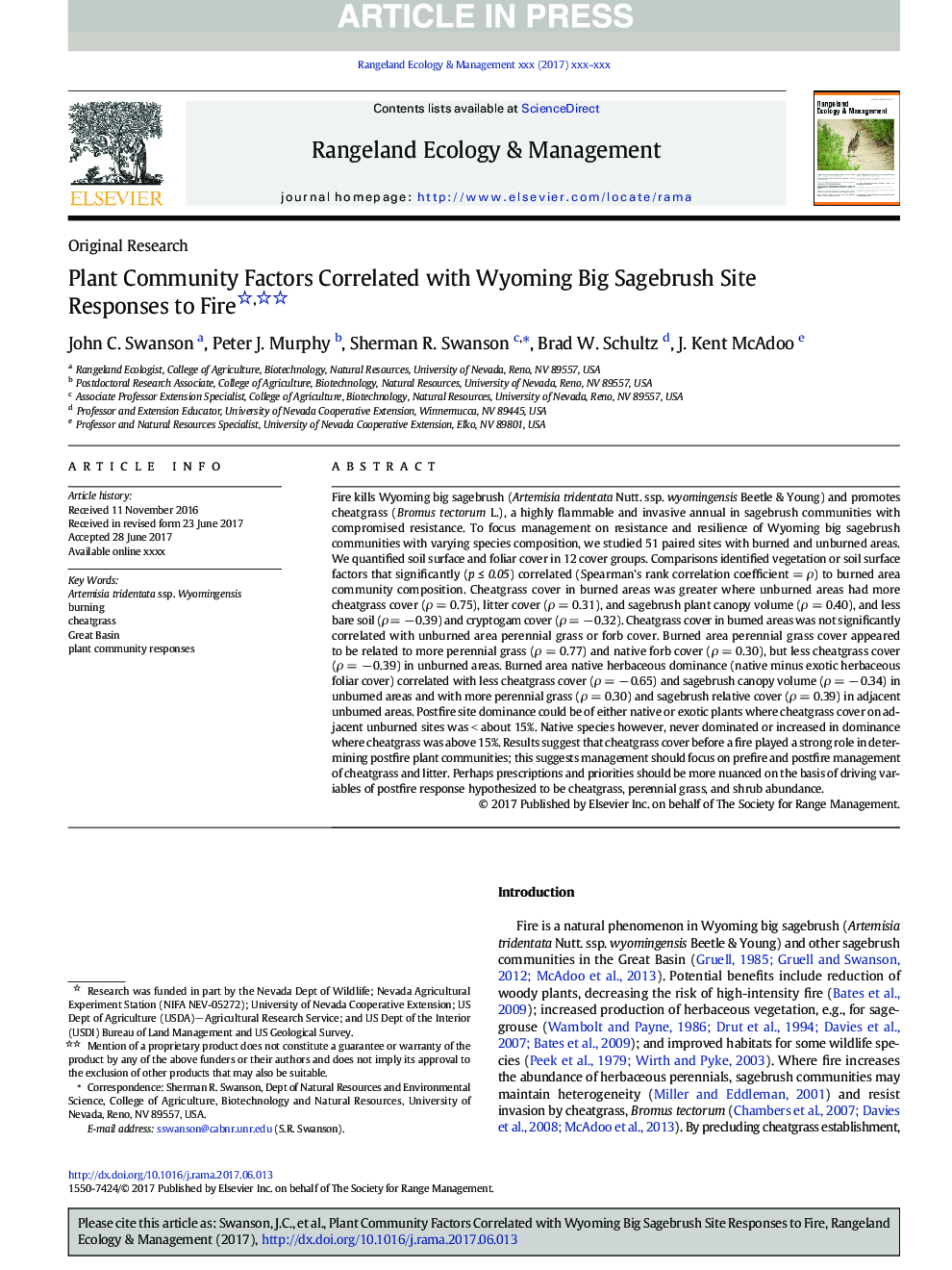| کد مقاله | کد نشریه | سال انتشار | مقاله انگلیسی | نسخه تمام متن |
|---|---|---|---|---|
| 8849645 | 1618646 | 2018 | 10 صفحه PDF | دانلود رایگان |
عنوان انگلیسی مقاله ISI
Plant Community Factors Correlated with Wyoming Big Sagebrush Site Responses to Fire
ترجمه فارسی عنوان
فاکتورهای مربوط به گیاهان مرتبط با وایومینگ پاسخ به سئو سایت بزرگ در مورد آتش سوزی
دانلود مقاله + سفارش ترجمه
دانلود مقاله ISI انگلیسی
رایگان برای ایرانیان
موضوعات مرتبط
علوم زیستی و بیوفناوری
علوم کشاورزی و بیولوژیک
علوم کشاورزی و بیولوژیک (عمومی)
چکیده انگلیسی
Fire kills Wyoming big sagebrush (Artemisia tridentata Nutt. ssp. wyomingensis Beetle & Young) and promotes cheatgrass (Bromus tectorum L.), a highly flammable and invasive annual in sagebrush communities with compromised resistance. To focus management on resistance and resilience of Wyoming big sagebrush communities with varying species composition, we studied 51 paired sites with burned and unburned areas. We quantified soil surface and foliar cover in 12 cover groups. Comparisons identified vegetation or soil surface factors that significantly (p ⤠0.05) correlated (Spearman's rank correlation coefficient = Ï) to burned area community composition. Cheatgrass cover in burned areas was greater where unburned areas had more cheatgrass cover (Ï = 0.75), litter cover (Ï = 0.31), and sagebrush plant canopy volume (Ï = 0.40), and less bare soil (Ï = â 0.39) and cryptogam cover (Ï = â 0.32). Cheatgrass cover in burned areas was not significantly correlated with unburned area perennial grass or forb cover. Burned area perennial grass cover appeared to be related to more perennial grass (Ï = 0.77) and native forb cover (Ï = 0.30), but less cheatgrass cover (Ï = â 0.39) in unburned areas. Burned area native herbaceous dominance (native minus exotic herbaceous foliar cover) correlated with less cheatgrass cover (Ï = â 0.65) and sagebrush canopy volume (Ï = â 0.34) in unburned areas and with more perennial grass (Ï = 0.30) and sagebrush relative cover (Ï = 0.39) in adjacent unburned areas. Postfire site dominance could be of either native or exotic plants where cheatgrass cover on adjacent unburned sites was < about 15%. Native species however, never dominated or increased in dominance where cheatgrass was above 15%. Results suggest that cheatgrass cover before a fire played a strong role in determining postfire plant communities; this suggests management should focus on prefire and postfire management of cheatgrass and litter. Perhaps prescriptions and priorities should be more nuanced on the basis of driving variables of postfire response hypothesized to be cheatgrass, perennial grass, and shrub abundance.
ناشر
Database: Elsevier - ScienceDirect (ساینس دایرکت)
Journal: Rangeland Ecology & Management - Volume 71, Issue 1, January 2018, Pages 67-76
Journal: Rangeland Ecology & Management - Volume 71, Issue 1, January 2018, Pages 67-76
نویسندگان
John C. Swanson, Peter J. Murphy, Sherman R. Swanson, Brad W. Schultz, J. Kent McAdoo,
